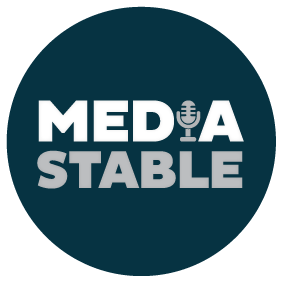When it comes to media, does how a woman looks still matter?
As a young girl, I loved watching Wheel of Fortune. Adriana Xenides was the epitome of glamour for me. I loved her hair, her clothes, her makeup. And let’s face it, her legs. Who didn’t? She was beauty to me, and to a large proportion of Wheel of Fortune’s viewers.
In that same era, Jana Wendt – aka the Perfumed Steamroller – was also on air. She looked good, and she had strong views that demanded to be listened to.
But here lies the problem with the representation of females in media. In a visual medium, we are served to look good first, and any other contribution is secondary.
Looks have, naturally, always mattered on television. But modern audiences want more diverse representation. There’s more diversity in media in terms of the gender, size, shape, colour, religion, race, nationality and ability than ever before. But is there diversity in the range of how aesthetically
Does the way someone, or more specifically a woman’s looks, play a role in them getting a gig on TV? That I’m almost certain about.
It’s not so much that talent will be rejected for the way they look. Our bias is positive – the better looking someone is, the easier it will be to get them on television.
In the PR game, I work with experts who want to build their media profile to become the go-to experts for media in their field. The question of how important presentation is will inevitably come up. Our advice is always to present as well as possible – bring the expert knowledge, dress sharp, bring the energy and deliver good content.
For many women though, the question of how they present themselves in media is more complex. They want to look good, but not at the expense of being listened to and valued for their thought leadership.
Many women want to honour their creativity in style and beauty trends but worry that will mean they are invariably reduced to what they look like and not what they have to say. And who is reducing them? We, the audience. We want to see an end to the tropes and sexism in media, at the same time as demanding women in the media look a certain way.
Back in 2014, Karl Stefanovic and Lisa Wilkinson shared the couch on Channel 9’s Today Show… and Karl conducted an experiment in sexism by wearing the same blue suit every day for a year, waiting to see if any viewer would notice and make a comment. They didn’t. But in the same period, viewers did make almost daily comments about what Lisa was wearing. As Karl put it at the time, men are judged “on how [they] do [their] job, basically. Whereas women are quite often judged on what they’re wearing or how their hair is.”
The judgement comes in many forms, from internal, subconscious thoughts to all out misogyny in the comments section online.
When it comes to presentation in the media, the answer can’t be that to prevent objectification, women have to make themselves less objectifiable. That has an air of victim blaming about it.
I believe the solution lies in expanding the representation of female experts in the media. Because as the body positive movement, and demand for greater diversity on our screens widens, there is still solid research that shows that just 30 per cent of sources and experts quoted in media are women.
We need representation on television of all the many various physical appearances of women who know their stuff.
Of course, that requires media to not discriminate against or typecast female experts who don’t fit the traditional mould of what makes a woman beautiful.
To shift the needle, media needs to back their talent irrespective of what they look like, show their audiences they respect their opinion, and take responsibility for the comment sections of their online spaces. And shifting that inert bias is the kind of change that can only happen over the course of time.
But overall, if we can improve the numbers of women in media who are there for their knowledge, not what they look like, that’s a good start.
Emily Morgan is a former journalist and editor who now works in PR, getting subject matter experts into the media and helping them tell their stories.
